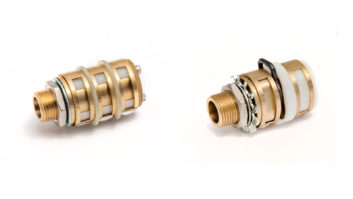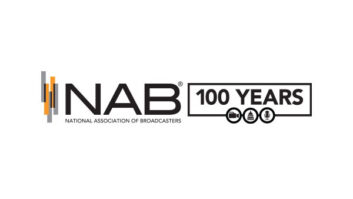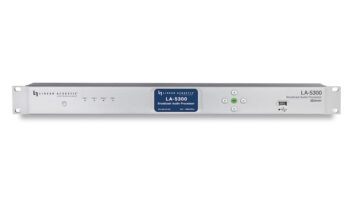Two years ago, TC Electronic and IVL Technologies formed TC-Helicon with the goal of creating solutions for live and studio vocal processing. The new company’s first product was the acclaimed VoicePrism, a single-box voice formant and pitch processor.
A mono-in/stereo-out processor, VoicePrism features line- and mic-level inputs (a built-in preamp with phantom power is standard), compression, gating, dual parametric EQ, 4-voice harmony, fifth-lead doubling voice for automatic double-tracking, and two separate post-effects blocks with chorus/flange, delay and reverb, and harmony libraries. Harmony effects can be created by “reading” the input signal or can be driven by a MIDI input from a keyboard or sequencer. The VoicePrism can not only create super-accurate harmonic doubling, but can also be used to create multivoice chords and textures that simply can’t be sung.
Now, TC-Helicon takes its vocal processing approach way over the top with the VoiceCraft Voice Modeling™ card, an optional daughterboard for VoicePrism. The upgrade is available either as a $599 card (for existing VoicePrism owners) or as the $1,898 VoicePrism Plus, with the card pre-installed in a VoicePrism unit. As an added bonus, the VoiceCraft card adds 24-bit, 44.1/48kHz S/PDIF coaxial and AES/EBU digital I/O, two extra parametric EQs, and enhanced delay/reverb algorithms, as well as Voice Modeling technology.
Ease of operation/parameter navigation was a major factor in developing both VoicePrism/VoicePrism Plus. Controls on the slanted front panel are easy to see, and there are four soft knobs below the LCD screen, dedicated edit buttons that link directly to page menus, a large data wheel, and individual pots for adjusting lead/harmony/effects/input levels.
The front panel features an XLR mic input and headphone-out jack, while the rear panel connections include MIDI, balanced TRS input and outputs (-10/+4 dB switchable), the S/PDIF and AES/EBU digital I/Os, and ¼-inch footswitch jack. An additional aux input bypasses the Harmony section, allowing the VoicePrism Plus to be used as a conventional reverb/effects box, either alone or with the Voice Modeling and harmony functions.
VoicePrism Plus splits the vocal input into separate lead voice and harmony effect channels, each with its own dedicated compressor and two parametric EQs. The Harmony channel is the same as the original VoicePrism and features four independent, formant-corrected pitch shifters that derive natural harmony voices from the vocal input. Independently adjustable parameters for each voice include gender, vibrato, timing, randomizing and scooping. The lead channel is substantially expanded with Voice Modeling and additional mixing and panning controls.
The Vocals button gives the user full control over the amount of dry lead voice and the Voice-Modeled (VM) lead voice, along with independent stereo panning for either and a ±50-cents detune to build a fuller VM lead or to create doubling effects. From this point, the VM algorithms really get fun, with versatile processing in five main effects menus. The first, VM Spectral, is a set of vocal “equalization” curves based on the natural tone controls that vocalists can impart, such as emphasizing lower registers. It intelligently applies itself only to voiced sounds — sibilants and consonants are unaffected.
VM Warp brings control over moving vocal formants, allowing subtle to extreme control of resonances and tone, such as adding chest tone for richness or reducing nasal whine. These also allow convincing transformations, including male-to-female and female-to-male gender shifting. VM Glottal offers breathiness, rasp and growl, with independent tweaking of each. The palette is rounded out with VM Inflect (scooping parameters) and VM Pitch (vibrato effects).
I began using VoicePrism Plus by scrolling through its presets, most of which are useful as is and can easily be tweaked. Many of the effects are dynamically controlled, meaning that the degree of processing is based on how hard you “hit” the input or sustain a note. For example, you can keep levels just below the effects “threshold” during the verse and automatically add the growl during the louder chorus. Speaking of grunge, the VM processing really saved the day when I was tracking a speed metal project. We were able to lay dozens of takes for lead and background parts in a single day with plenty of raspy growling, without completely frying the singer’s voice.
Alternatively, when mixing, if a track sounds too “nice,” you’re only a couple keystrokes away from punching up a little (or a lot of) “attitude.” Similarly, you can add a touch of vibrato to your regular vocal arsenal of delay/reverb/EQ/compression/etc. The octave shift is especially useful for layered background parts. The unit won’t magically transform a Whitney track into a perfect Barry White — or Springsteen into Madonna — but the gender shift effect can be remarkably effective for changing aspects of the performance.
Perhaps one of VoicePrism’s main drawbacks is that it offers too much; with many of the parameters, a little goes a very long way, requiring a subtle touch. But at $1,898 (or $599 for the upgrade), here’s a box that does what no other device on the market even comes close to (at any price), while adding superb single- and multipart harmony processing, great reverb/delay/doubling/pitch-based effects, versatile analog and digital I/Os, and more. Yeah!
Dist. by TC Electronic Inc., 742-A Hampshire Rd., Westlake Village, CA 91361; 805/373-1828; fax 805/379-2648; www.tc-helicon.com.





